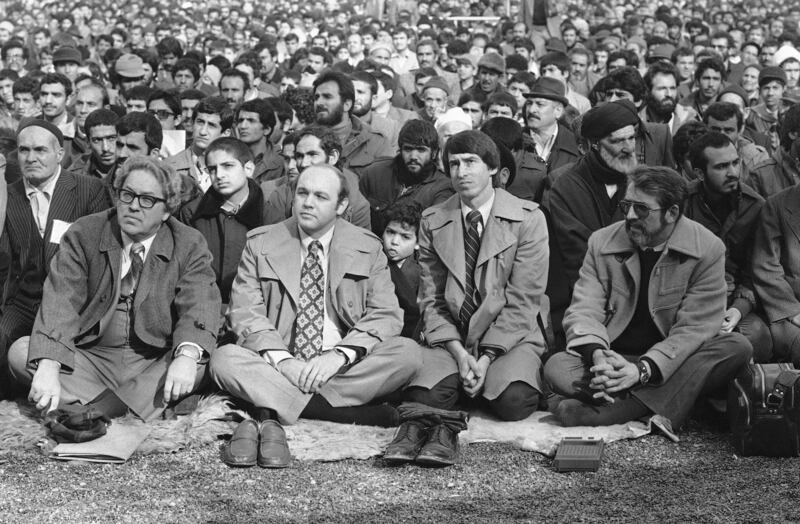On Nov. 4, 1979, a group of revolutionary Iranian students stormed the American embassy compound in Tehran, seizing diplomats, staff and guards. Shortly after the takeover, the leader of the newly established Islamic Republic, Ayatollah Rouhollah Khomeini, endorsed the action of the students. After the breakdown of negotiations and a failed U.S. rescue mission in April 1980, relations between the United States and Iran were severed. This event, known as the “Iran hostage crisis,” lasted until January 1981, and it ushered in four decades of tensions and conflict between the Islamic Republic of Iran and the United States.
Forty years of recrimination and mutual demonization, much of it driven by ideology and identity, have prevented many Americans and Iranians alike from realizing the long history of cultural connections that have, since the 19th century, linked their countries. This modern enmity masks the friendships that have endured the test of time, the extreme politics of the era, revolutionary transformation and international conflict.
There were many figures that, historically, connected the United States and Iran. On the one hand were the Americans who went to Iran. This included the missionaries who helped build schools and clinics, financial advisers who brought their expertise to banking and commerce, and educationalists and aid workers. James Bill estimated that approximately 850,000 Americans traveled to Iran during the Shah of Iran’s last decade in power. On the other hand were the Iranians who went to the United States, especially students who attended American institutions of higher learning. There were more than 50,000 Iranian students in the United States when the shah was overthrown in 1979. In that year, Iranians were the largest group of international students enrolled in universities in the United States.
Howard C. Baskerville is part of the early history of American-Iranian connections. He was killed in 1909 fighting for Iranian democracy and liberty during Iran’s Constitutional Revolution (1906-11). Inside Iran, Baskerville is known as the “American Lafayette.” This is, of course, a reference to George Washington’s most trusted French lieutenant from America’s revolution. Baskerville was a unique individual, and in many ways an embodiment of “Amrika” in Persia.
Along with Baskerville, the namesake of the newly-formed Baskerville Institute, were other American friends of Iran. Missionaries, especially Alborz College founders Samuel and Mary Park Jordan, were active in the 19th and 20th centuries. Financial advisers such as Morgan Shuster wrote of how European imperialism “strangled” the constitutional movement with which Baskerville fought, and postwar aid workers such as William Warne projected images of America that contrasted with the military realities of the Cold War. Other American Persophiles included academics (T. Cuyler Young), bureaucrats (Edwin Wright), Foreign Service officers (William G. Miller) and Helen Jeffries Bakhtiar. As the good work of the Peace Corps Iran Association makes known, more than 1,700 American Peace Corps volunteers served throughout Iran and demonstrated the best image of America for Iranians. To this day, Iranians admire these Americans for the contributions they made to their society.
Many of Iran’s American friends came from the Utah, as the historian Richard Garlitz has found. In 1915, John Widtsoe, then president of Utah State University, invited a young Iranian diplomat, Mirza Ali Gholi Khan, Counselor of Legation of Persia (Iran), to give a lecture at USU in 1915. When President Harry S. Truman announced his “Point Four” program in 1948, he called on another Utah State University president — Franklin Harris — to lead the mission to implement a series of agricultural cooperation initiatives. Other institutions of higher education in Utah, including Brigham Young University and University of Utah, have a history of exchanging faculty and experts with Iranian universities and research centers.
Fiery rhetoric from Washington and Tehran do not always reflect the values of the U.S. and Iranian people, and 40 years of mutual demonization has not erased a century of friendship between individual Iranians and Americans. Today, any traveler to Iran will notice that Iranian people want to distance themselves from the actions of their government. While anti-Americanism is sweeping across the Middle East, many young Iranians (individuals under the age of 30 constitute two-thirds of Iran’s 80 million people) hold genuinely pro-American sentiments. This is especially true for the students, workers, teachers, artists, journalists, athletes and entrepreneurs who are part of a vibrant Iranian civil society seeking peace with all nations. When American wrestling teams or volleyball teams went to Iran, they were surprised at the level of Iranian public’s support for them and how pro-American they are.
Many Americans underscore their differences of opinion vis-à-vis their own president’s Iran policy. If Baskerville and many of his contemporaries grew out of the progressive movement of the early 20th century, Americans today live in a time of imminent reform that relates to the country’s behavior abroad.
Like Baskerville, these Americans want an end to continuous tensions and angry rhetoric. As much as the Iranian regime wants to emphasize acrimony and conflict with the United States, a broader perspective on the history of friendship between Iranians and Americans clearly points to friendship and mutual respect.
Bahman Baktiari is the executive director of the Baskerville Institute.
Matthew K. Shannon is the author of Losing Hearts and Minds: American-Iranian Relations and International Education during the Cold War (Cornell University Press), and an associate professor at Emory & Henry College.

